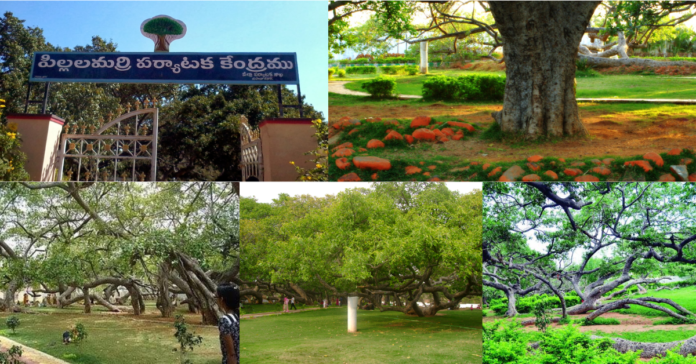Pillalamarri, also known as Peerlamarri, is a colossal banyan tree located in Mahabubnagar district of Telangana, India. Estimated to be around 800 years old, it covers an area of approximately three acres. The tree’s massive canopy provides shelter to thousands of people and has become a significant tourist attraction.
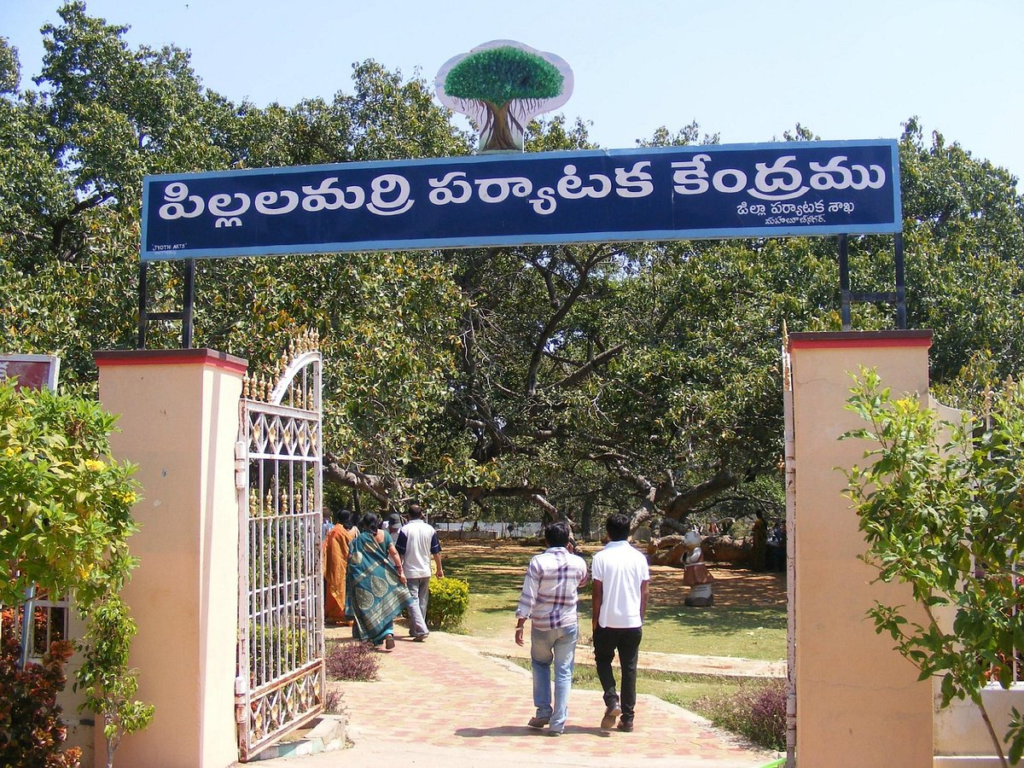
The Historical Significance of Pillalamarri
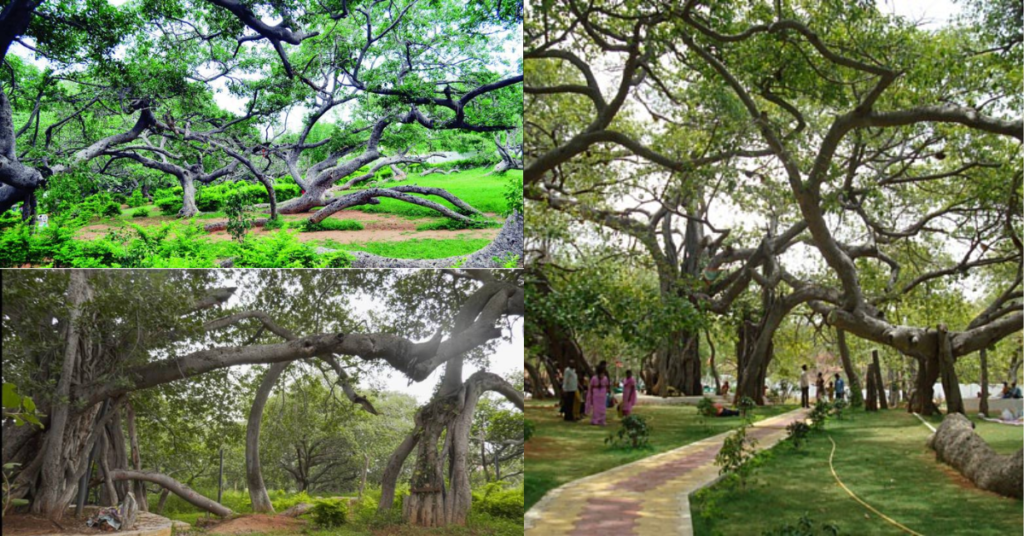
Pillalamarri is not only a natural marvel but also holds significant historical and cultural importance. The tree has existed since around 1200 CE, making it one of the oldest banyan trees in India. Initially, it had a main trunk surrounded by many prop roots, which over time grew down into the ground and formed new trunks, creating a vast network of interconnected trunks. The name “Pillalamarri” translates to “Children’s Banyan” in Telugu, derived from the tree’s numerous prop roots that resemble the main trunk’s children. Over centuries, the original main trunk has either perished or become indistinguishable among the many prop roots, but the tree continues to thrive and expand.
Cultural and Religious Significance
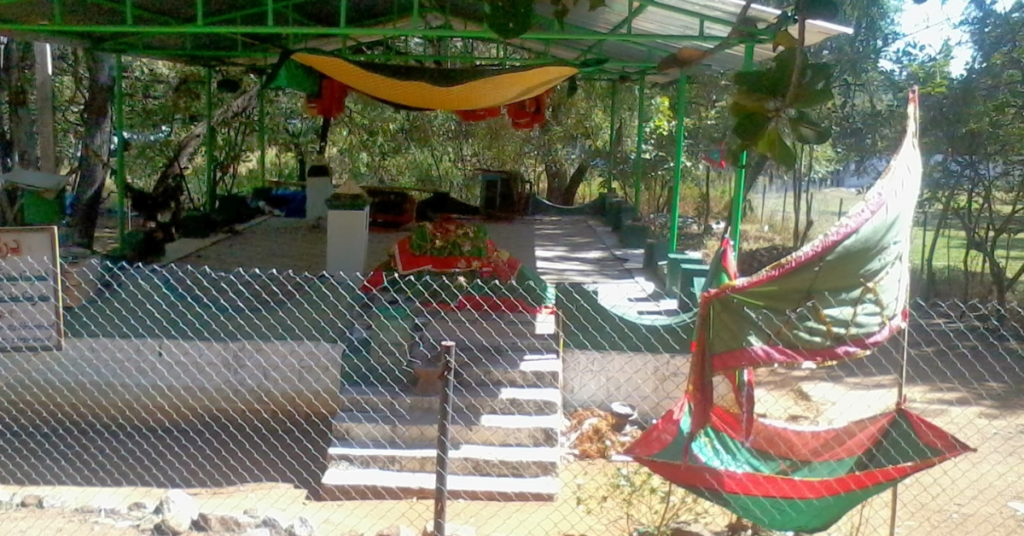
- Sufi Saints’ Tombs: Near the tree, there are the tombs of two Muslim Sufi saints, Jamal Hussain and Kamal Hussain. Although some believe these tombs are directly under the tree, they are situated a short distance away, with a separate entrance leading to the shrine. This adds a layer of spiritual significance to the site.
Also Read: A Pilgrim’s Guide to Inavolu Mallanna Temple and Its Jathara
Sri Rajarajeswara Temple
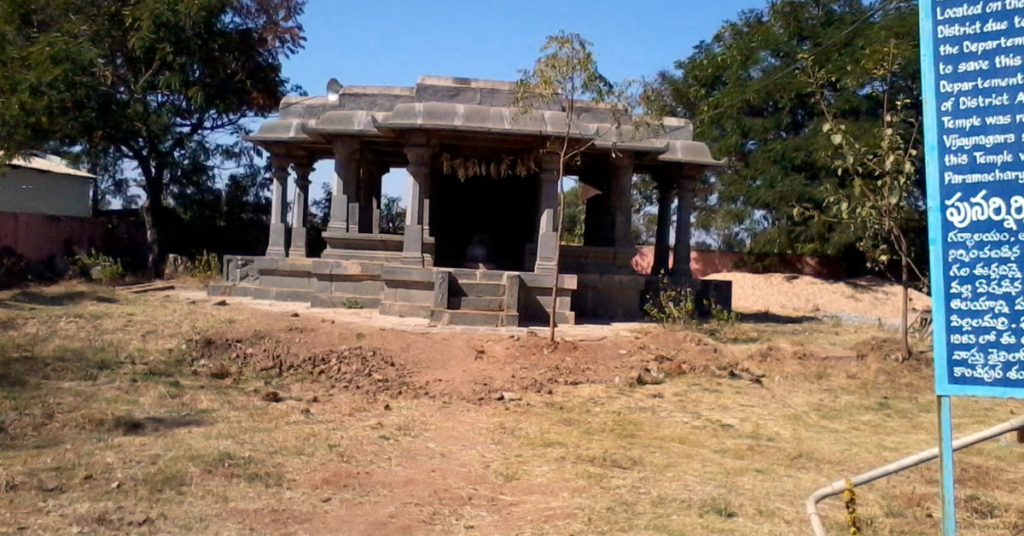
The Sri Rajarajeswara Temple, located on the premises of Pillalamarri, has an interesting history. Originally, this temple was situated in Erladinne (Erula Dinne) on the left bank of the Krishna River. During the construction of the Srisailam reservoir, the village where the temple was located was at risk of being submerged. To save the temple, the state archaeology department dismantled it in 1981 and moved it to the Pillalamarri complex. By 1983, the temple was carefully reconstructed on a new foundation. This temple, originally built in the 16th century, showcases the distinct architectural style of the Vijayanagara dynasty, highlighting the rich cultural heritage of the region.
Mythology and Legends
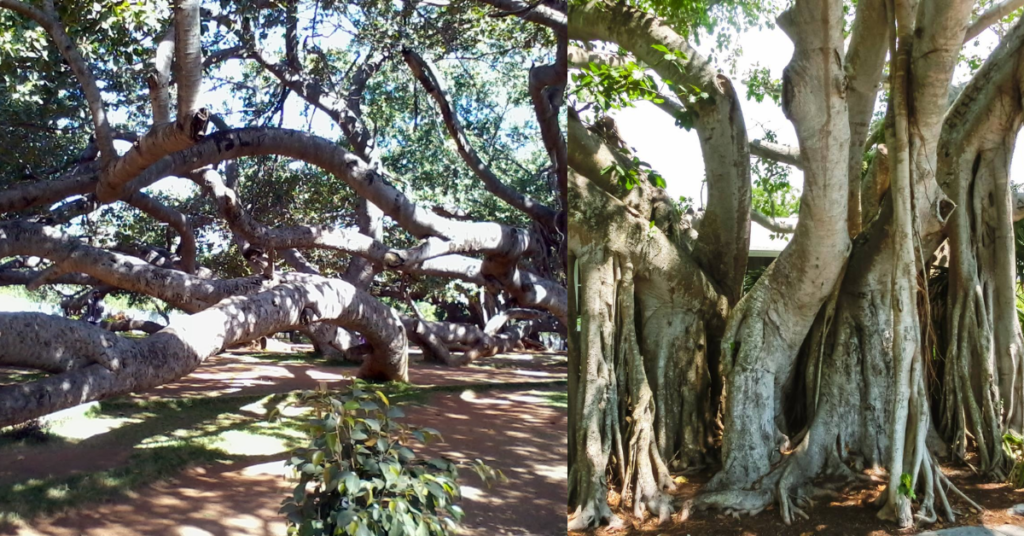
Local folklore is rich with tales about the tree’s origins, its association with deities, and the miracles it has performed. These stories have been passed down through generations, adding to the tree’s mythical aura. Legends tell of sages and saints meditating under its sprawling branches and of the tree’s mystical powers that protect and bless the area.
Cultural Melting Pot
The coexistence of the ancient temple and the Sufi saints’ tombs reflects the region’s diverse cultural heritage. Pillalamarri stands as a symbol of harmony and the coexistence of different faiths. It represents the peaceful blending of Hindu and Islamic traditions, showcasing the inclusive nature of the local culture.
Also Read: Rajiv Park in Nalgonda: A Refreshing and beautiful for nature lovers
A Symbol of Resilience

Pillalamarri’s survival through the centuries is a testament to its resilience. It has weathered storms, droughts, and human interference, emerging stronger each time. The tree’s ability to adapt and thrive symbolizes the enduring spirit of the region and its people. Despite the challenges, Pillalamarri continues to grow and flourish, representing hope and perseverance.
As you stand beneath the sprawling canopy of Pillalamarri, you can’t help but feel a connection to the past. The tree’s historical significance adds an extra dimension to its allure, making it not just a natural wonder but also a living repository of the region’s heritage. Its massive branches spread out like a protective embrace, inviting visitors to explore and reflect on the rich tapestry of history woven around it.
Pillalamarri Mini Park and Museam
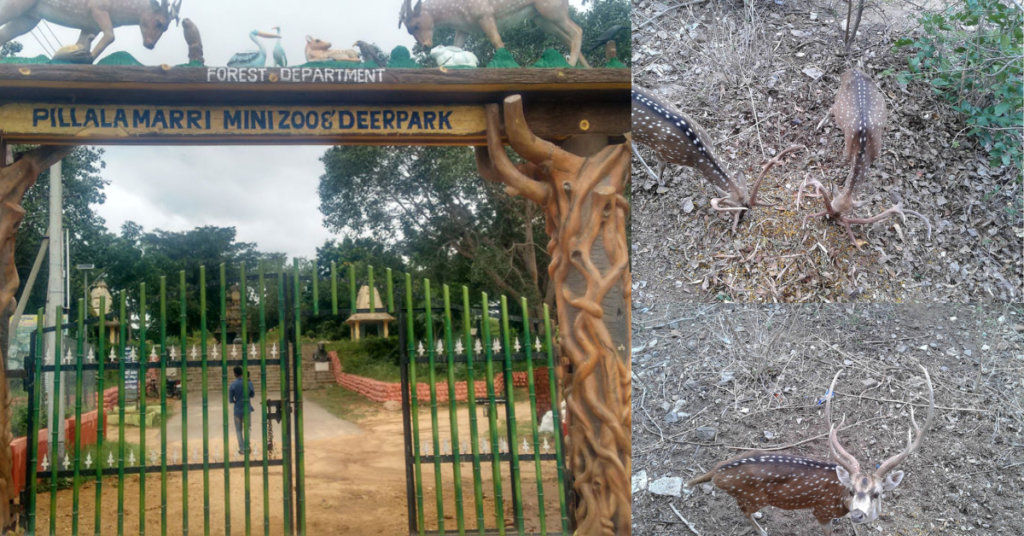
The Pillalamarri Tourism Centre offers more than just the famous banyan tree. On the site, there is a science museum that showcases artifacts found in the Palamuru region. These artifacts provide insights into the local history and culture. Surrounding the impressive tree, there is a small nursery where various plants are grown, adding to the area’s charm. Additionally, the tourism center features a deer park, where visitors can observe these graceful animals in a natural setting. The picturesque environment of Pillalamarri has also made it a popular location for filming, with scenes from various movies being shot here. This combination of attractions makes Pillalamarri a multifaceted destination, offering both educational and recreational experiences.
Pillalamarri Tree in ill health
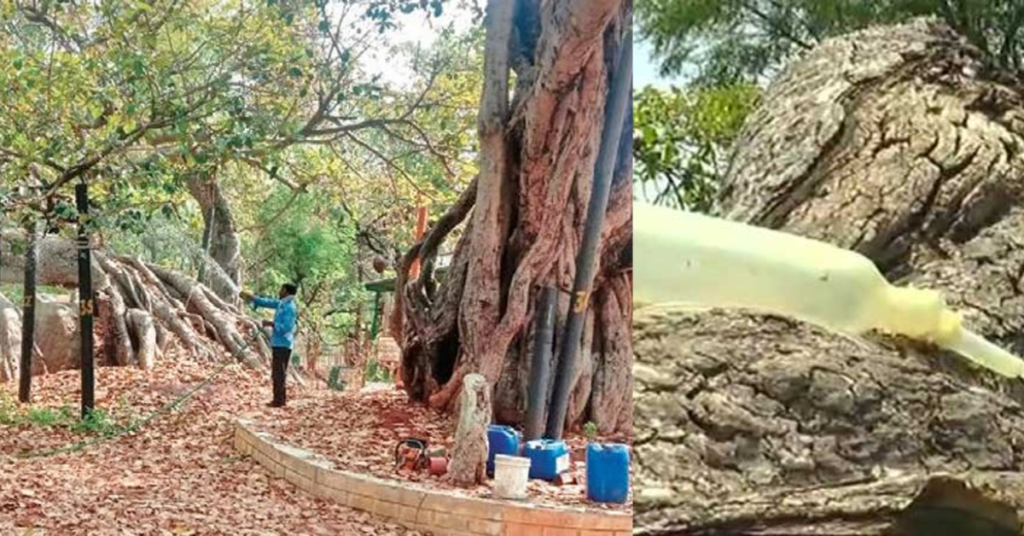
Despite its grandeur and historical significance, Pillalamarri is facing health challenges. The tree, which has stood for centuries, is showing signs of distress. Issues like deteriorating branches, weakened roots, and damage from environmental factors are affecting its well-being. Efforts are being made to address these problems and ensure the tree’s survival, but the age and size of Pillalamarri make it vulnerable. Conservationists and local authorities are working together to provide care and protection to help the tree continue to thrive and remain a symbol of the region’s rich heritage.
Also Read: The Living Miracle of Mellacheruvu Sri Shambhu Lingeswara Swamy Temple
Unique Appearance of Pillalamarri
Pillalamarri is renowned for its unique appearance, which sets it apart from other trees. The banyan tree’s massive canopy covers about three acres of land, creating an expansive and impressive sight. Initially, it had a single main trunk, but over time, numerous aerial roots grew down into the ground, forming new trunks and creating a vast network of interconnected branches and trunks. This sprawling network makes the tree look like a miniature forest. The tree’s broad, dense foliage provides a lush, green canopy that offers a cool and inviting shelter beneath it. Its appearance is both majestic and intricate, symbolizing the tree’s resilience and the rich history it has witnessed over the centuries.
How to Travel There
By road: Pillalamarri is roughly 4-5 kilometers from Mahabubnagar town
Railway Station: The closest station is Mahabubnagar.
Entry Ticket
| Adult | INR 10 |
| Child | INR 5 |
Conclusion
Pillalamarri, with its colossal banyan tree, historical temple, and cultural significance, stands as a remarkable testament to the region’s rich heritage and resilience. Its blend of natural wonder, historical artifacts, and spiritual landmarks makes it a unique destination that invites visitors to explore and reflect on its profound legacy. Despite facing health challenges, efforts are underway to preserve this living symbol of the past, ensuring it continues to inspire and captivate future generations.
Frequently Aske Questions(FAQs)
A: Pillalamarri is estimated to be around 800 years old.
A: Pillalamarri is a historic banyan tree and tourism center in Telangana, India, known for its massive canopy and cultural significance.
A: Attractions include the banyan tree, Sri Rajarajeswara Temple, Sufi saints’ tombs, a science museum, a nursery, and a deer park.
A: Pillalamarri is located about 4-5 kilometers from Mahabubnagar town in Telangana.
A: Yes, the tree is currently facing health issues such as deteriorating branches and weakened roots.

